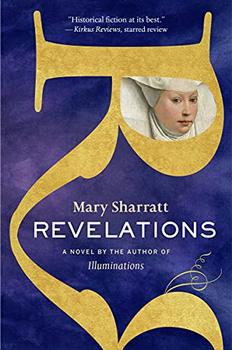Summary | Excerpt | Reading Guide | Reviews | Beyond the book | Read-Alikes | Genres & Themes | Author Bio

A Novel of Joan of Arc
by Kimberly CutterKimberly Cutter's debut novel is a gritty, absorbing exploration of the life of Joan of Arc.
As Cutter explains in her afterword, Joan of Arc is one of the most written about women in history, yet I'm not aware of any that capture the essence of Joan's journey the way Cutter does.
The novel follows Joan's life closely, and Cutter often uses phrases from Joan's actual conversations and correspondence in her dialogue. Despite its accuracy and the adherence to the historical record, this delightful novel is very much fiction, taking the reader into the heart and mind of one of history's most fascinating women.
Cutter's success in creating a believable Joan of Arc begins with her ability to illustrate the setting. The novel's palette is muddy brown and dingy gray. Joan begins life on a dreary farm that is occasionally punctuated by the brilliance of a bright day or a waving daffodil, but most of the environment is dour, depressing. The English and Burgundians (Northern French who sided with the English during the Hundred Years' War) have pummeled the countryside, seizing small towns and terrorizing people in their homes. Cutter does not flinch from describing this subsistence society in all of its disturbing detail. This was a pre-modern world and the common people were dirty. Joan, herself, is a messy, unkempt girl with bright, almost feverish, eyes. Her father is abusive and her mother ineffectual. After her sister leaves, Joan faces a cheerless life that she fears, will evolve into a numbing marriage. And then she sees Saint Michael in the garden.
The setting is coarse, the parents are problematic, the girl is special but unloved, and then the girl is saved from her life by what seems like magic and all becomes well - kind of. If this plot sounds familiar, it should because The Maid has the atmosphere of a fairy tale. As Joan sloughs off the remnants of her poor, meager life as a farmer's daughter to become vanquisher of the English (at least for a time), she credits all of her success to "the voices" that visit her. Saint Catherine, Saint Margaret, and Saint Michael, as well as God himself, visit Joan to brief her on her mission and to assist her on her way. Though many in Joan's own time took these visions as fact, it is hard for modern readers to go along with this part of the story. Cutter anticipates this disbelief and artfully rides the line between Joan as Saint, Joan as Witch, and Joan as Insane - all theories that were actually investigated during Joan's lifetime. The result is marvelous: Cutter realizes that in order to create a realistic story, she must provide for each interpretation of Joan's persona in order for the character to have merit with readers.
At the heart of the novel, however, is the Joan that Cutter creates, one that arises from imagination, not the historical record. This Joan is frightened, tired, nervous about her position, and desires a different kind of life. She is driven by her intense relationship with God, but is saddened that she'll never know love or have children. As we see her interacting with others - saying and doing things the real Joan is reputed to have said and done - we are also provided with the internal dialogue, the constant stream of questioning and terror, that runs through Joan's mind. Cutter's ability to present a believable internal portrait that seamlessly corresponds with the outward depiction - one that was largely determined by history - makes for an impressive picture of Joan of Arc. Historical novels about real people are notoriously tricky because it is impossible to know what they actually thought. The best anyone can do is make educated guesses based on the available evidence. Cutter's guesses are excellent, and I came away from the novel feeling as though I had learned about the real Joan of Arc, rather than merely a fictional one. Of course, it is perilous to take historical fact from historical fiction, but when the author is so successful in her creation, you find yourself doing it anyway.
![]() This review was originally published in The BookBrowse Review in November 2011, and has been updated for the
October 2012 edition.
Click here to go to this issue.
This review was originally published in The BookBrowse Review in November 2011, and has been updated for the
October 2012 edition.
Click here to go to this issue.

If you liked The Maid, try these:

by Mary Sharratt
Published 2022
A fifteenth-century Eat, Pray, Love, Revelations illuminates the intersecting lives of two female mystics who changed history - Margery Kempe and Julian of Norwich.

by Helen Castor
Published 2016
From the author of the acclaimed She-Wolves, the complex, surprising, and engaging story of one of the most remarkable women of the medieval world - as never told before.
Your guide toexceptional books
BookBrowse seeks out and recommends the best in contemporary fiction and nonfiction—books that not only engage and entertain but also deepen our understanding of ourselves and the world around us.